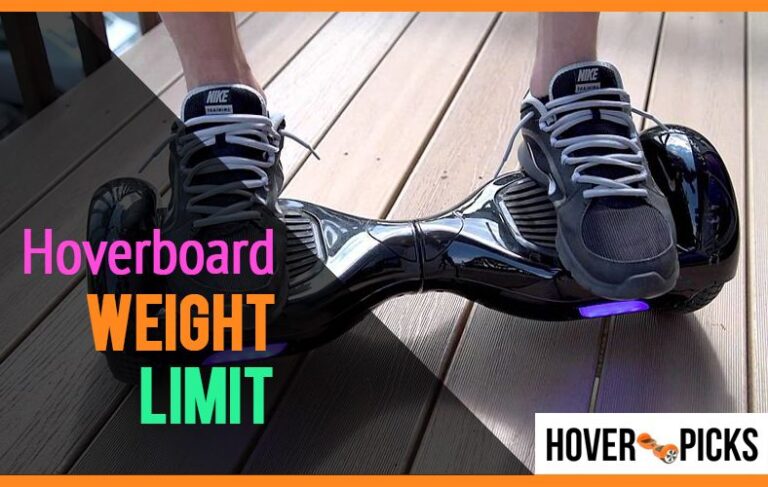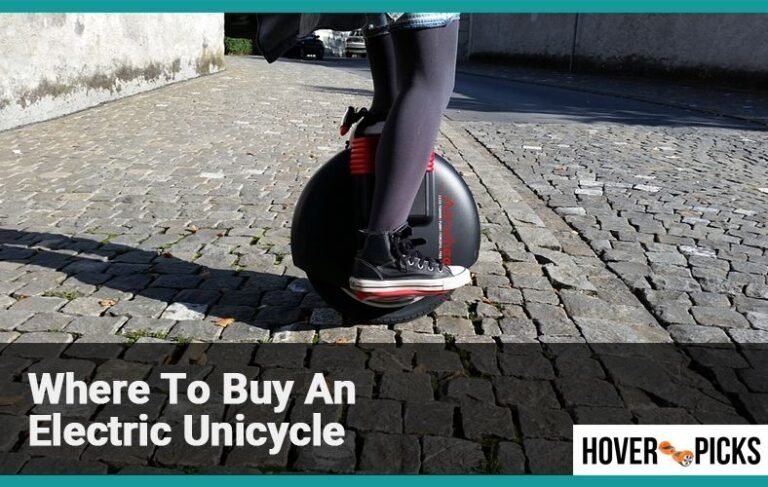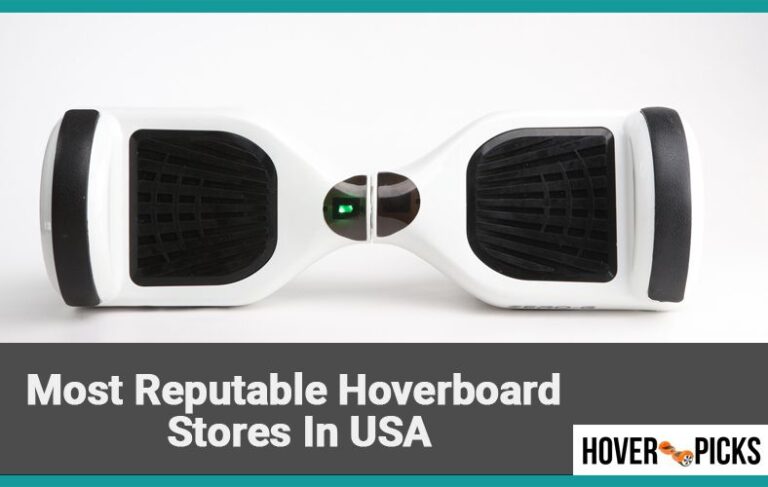How Do Hoverboards Work?
Hoverboards have become very popular in the recent past. Users refer to them by a variety of names, including balance boards, scooters without handlebars, and self-balancing scooters.
Indeed, hoverboards were clearly to hottest entertainment toys in the recent holidays. So, what has made them so popular? Are they safe for use by all ages? More importantly, is it worth investing in a self-balancing scooter?
Before you attempt to answer any of the above questions, it is important that you understand how these marvels of technology actually work. This will help you to demystify some of the controversies surrounding the use of scooters.
So, if you are interested in a hoverboard, read on to get the finer details.
How Does a Self-Balancing Scooter Actually Work?
We’ll answer this question exhaustively yet simply. Let’s take you on a journey through the workings of the hoverboard. We’d like you to understand how each of its components carries out their functions.
For starters, the hoverboard has a frame that pivots at the center. Also, each of the wheels houses the electric sensors and motors that control speed and angle of inclination.
It has a special component that we refer to as the gyroscope. This component receives data from the sensors and transmits it on to the logic board. This process ensures that your board remains upright at all times.
Additionally, the board has two footpads that play a very instrumental role in the operations of the hoverboard. Under each footpad is a switch that controls an infrared LED light. All communication to the sensor comes from this light.
As long as you are on board with your feet flat, the light remains on. As such, the sensor informs the logic not to run the motors. However, once you lean forward, the sensor instructs the logic board to run the motor.
Now, it is important you understand that each of the motors can work independently. What this means is that you can spin in circles on one spot!
Key Components of a Self-balancing Scooter:
- The logic board (the brains)
- The steel frame that pivots at the center
- A couple of infrared sensors
- A pair of gyroscopes
- One pair of electric motors encased within each of the two wheels
- A pair of speed sensors located within each of the wheels
- A battery pack
- Power switch
- Port for charging
- A pair of pressure pads – one for each foot
- The outer plastic shell
How Does the Self-Balancing Scooter Measure the Tilt?
The best way to measure an angle is by the use of an inclinometer. However, experts have not incorporated this technology into the hoverboard yet.
Instead, they have included two sensors that serve this purpose. These are the accelerometer and the gyroscope. The accelerometer measures the gravitational pull on the board. In this aspect, it acts as an inclinometer. Also, it measures the acceleration of the hoverboard, either forward or backward. We refer to this as the noisy signal.
On the other hand, each gyroscope measures the rate at which an angle changes. You can then integrate to get the angle of inclination. Alternatively, you can rely on two signals from the noisy signals and one from the integration to get the real value of angle change.
But, even with the correct angle tilts, you need movement. This is where motors come into play. Hoverboards are fitted with motors that incorporate an anti-clogging design. The motors have less polarity than magnets. They enhance the smooth movement you experience when you are taking your ride.
How Does a Hoverboard Move?
Believe me; self-balancing scooters are a marvel of engineering ingenuity. Their ability to carry out electronic, mechatronic and mechanical control make them one of the best wonders of the engineering world
So, how do they execute their almost flawless moves? Well, let’s have a look at how each of the key components contributes to this.
The Logic Board
This is the brain of the entire machine. It has a computer that processes information in real time. It enables you to know your traveling speed, the tilt of each of the wheel, the remaining charge on the battery, and such other important vitals.
The logic board manages the power of the hoverboard. You can use it to set your board to ’locked’’, ’beginner mode’’, or even ’advanced mode’’. As such, it helps you control the maximum speed of the machine.
The logic board processes all the data you need super-fast. It works out such details as the angle of inclination, traveling speed, RPMs,
amongst others. Based on its findings, you can take the decision you desire. The surprising thing is that all this takes a very short time. Millions of bytes are processed by the second.
The Gyroscopes
The gyroscopes (speed control boards) come in a pair. They are arguably the most important components of the self-balancing scooter.
Each of the two gyros passes information about the acceleration and angle of inclination to the hoverboard. The motherboard processes this data to determine the action that you need to take. In addition, the gyros sense the when the earth is level, and when it is not.
They are very important in determining how you move. Thus, it’s important that you calibrate them from time to time. Once you calibrate them, they are able to identify the level of the earth with much ease. As such, you won’t have any trouble with angles and tilts brought about by the different terrains. Fortunately, you can use your remote to do the calibration!
The Wheel Sensors
Within each of the wheels of the hoverboard are the electric motor, speed sensors, and tilt sensor. The sensors detect the RPMs (revolutions per minute) of each wheel. This information is passed on to the gyros. The gyros then communicate with the motherboard to determine the changes that you need to make if any.
The Battery Pack
This is what powers your hoverboard. Each manufacturer has a preference when it comes to the battery pack. However, the majority tend to use the 36V 4400mAh ones.
Battery packs provide every component of your board with power. As such, they have to be regularly charged. Experts strongly advise that you should not start using your board until it is charged fully. This way, you can be certain of its optimal performance.
Pressure Pads
Every hoverboard has two pressure pads, located at the position of each of your foot. They do such a stellar job that you may be forgiven for thinking that they are very complex. In fact, they are very simple!
Each of the pressure pads has a rubber piece underneath that acts as a switch. They work in close communication with the gyroscopes to make things happen. For example, when your weight is on the hoverboard, the pads act as rubber triggers that activate the infrared LED sensor. Visit for hoverboard weight guide.
The sensor then informs the motherboard that the user is aboard. In a split second, the motherboard works out the configurations you need to enhance your balance on the board. When you ease the pressure on the pressure pads, this action interrupts the LED light. The motors require this signal to start the forward motion.
And, that’s how a hoverboard moves. It’s as simple as that!
What Does a Hoverboard Remote Do?
It’s noteworthy that not all hoverboards have remote controls. However, more and manufacturers are including them as part of the package. But, what is the role of the remote control in the way a hoverboard works? What does the remote control actually do?
One of its main functions is to lock the hoverboard when you are not using it. Also, it enables you to change between the various modes of operation, depending on what you want at a particular time.
The remote control communicates directly with the motherboard, which is the brain of your machine. As such, it has access to all the commands that the motherboard usually executes. In short, you can use the remote control to create a shortcut to some of the commands and to override others.
How Does a Self-Balancing Scooter Detect Your Movement?
Here, you can clearly see the ingenious part of its manufacturer. How this works is just a marvel!
You see, each of the pressure pads has a switch underneath. When the rider leans forward, he/she pushes the front switch down. A plastic partition slides between the infrared sensor and the infrared LED. This interrupts the light.
The interruption of the light tells the motor to move the wheels. Say you want to move in a particular direction, you’ll play around with either the right or left front switch. In fact, you can move in a number of directions. You can go forwards or spin in the desired direction.
How Does a Hoverboard Balance?
The key components that determine balance are the gyroscopes, the logic board, and the motors.
When you lean forward, you alter your center of gravity. To counter this, the gyros send this information to the logic board. This, in turn, instructs the motors to spin in order to compensate for the loss in the Center of gravity.
When you lean back, the reverse happens. The motors spin less, and you reduce your speed. When you lean further back, the motors stop spinning and you come to a standstill. What a brilliant piece of technology!
There you have it! We hope this article has helped answer the question, How do hoverboards work?’ Now that you understand the process, there’s no excuse for you to miss out on this new marvel of technology. Go ahead and have yourself a blast of fun!
You may read also:




